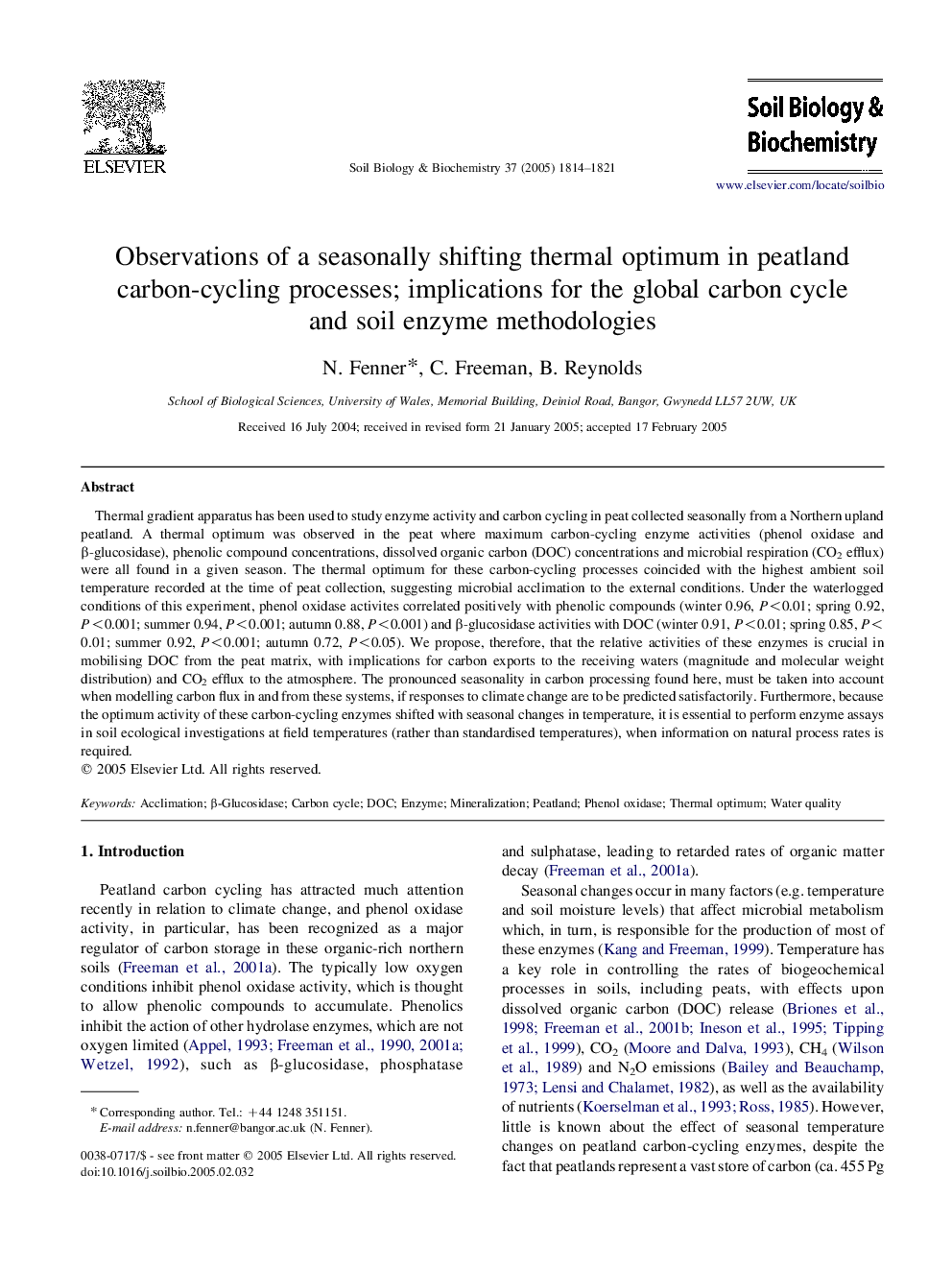| Article ID | Journal | Published Year | Pages | File Type |
|---|---|---|---|---|
| 10846257 | Soil Biology and Biochemistry | 2005 | 8 Pages |
Abstract
Thermal gradient apparatus has been used to study enzyme activity and carbon cycling in peat collected seasonally from a Northern upland peatland. A thermal optimum was observed in the peat where maximum carbon-cycling enzyme activities (phenol oxidase and β-glucosidase), phenolic compound concentrations, dissolved organic carbon (DOC) concentrations and microbial respiration (CO2 efflux) were all found in a given season. The thermal optimum for these carbon-cycling processes coincided with the highest ambient soil temperature recorded at the time of peat collection, suggesting microbial acclimation to the external conditions. Under the waterlogged conditions of this experiment, phenol oxidase activites correlated positively with phenolic compounds (winter 0.96, P<0.01; spring 0.92, P<0.001; summer 0.94, P<0.001; autumn 0.88, P<0.001) and β-glucosidase activities with DOC (winter 0.91, P<0.01; spring 0.85, P<0.01; summer 0.92, P<0.001; autumn 0.72, P<0.05). We propose, therefore, that the relative activities of these enzymes is crucial in mobilising DOC from the peat matrix, with implications for carbon exports to the receiving waters (magnitude and molecular weight distribution) and CO2 efflux to the atmosphere. The pronounced seasonality in carbon processing found here, must be taken into account when modelling carbon flux in and from these systems, if responses to climate change are to be predicted satisfactorily. Furthermore, because the optimum activity of these carbon-cycling enzymes shifted with seasonal changes in temperature, it is essential to perform enzyme assays in soil ecological investigations at field temperatures (rather than standardised temperatures), when information on natural process rates is required.
Keywords
Related Topics
Life Sciences
Agricultural and Biological Sciences
Soil Science
Authors
N. Fenner, C. Freeman, B. Reynolds,
